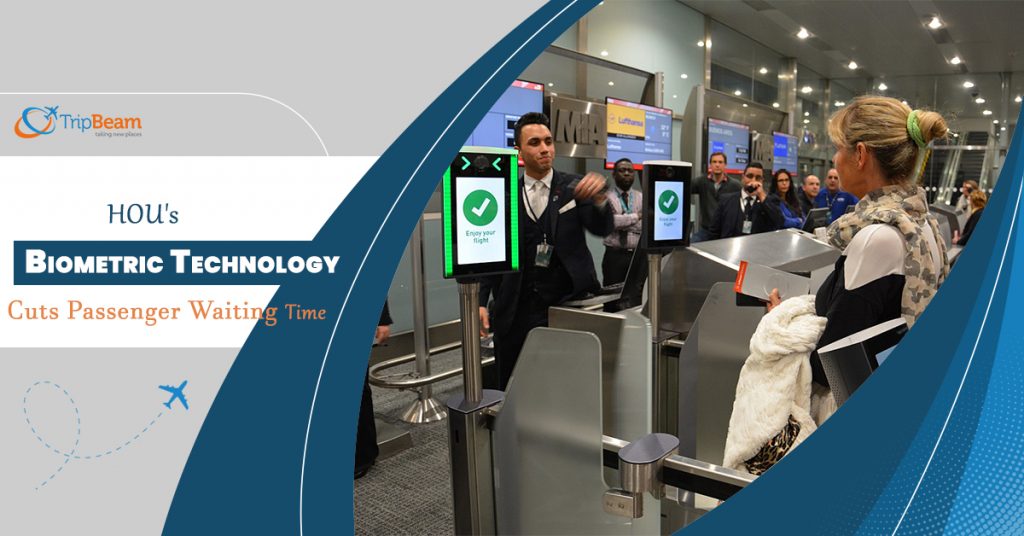Houston’s oldest commercial airport, William P. Hobby (HOU), becomes Houston’s first to use full-blown Biometric Technology. Facial recognition will manage the arrival and departure of international passengers at the Hobby Airport.
According to the airport, passengers will be able to navigate through the airport twice as quickly. The facility aims to simplify the entry and exit of millions of passengers that traverse the airport.
Houston Aviation Director’s Take on the Event
According to Mario Diaz, Hobby Airport’s Biometric Technology is a huge futuristic step. It will definitely take William P. Hobby Airport closer to its goal of becoming a 5-star facility.
The airport predicts that passenger waiting-time at the US Customs and Border Protection (CBP) checkpoints will cut down by half.
Further, Diaz also acknowledged partners CBP and Southwest Airlines’ role in achieving the technological feat.
Is HOU the first to deploy the Biometric Facial Recognition Technology?
No, Geoge Bush Intercontinental Airport launched the Technology in 2017.
In late 2018, CBP, Southwest Airlines, and Houston Airport System introduced biometrics for departures.
William P Hobby Airport’s biometric recognition system uses similar but cutting-edge Technology.
Biometric Facial Technology: What International passengers should expect?
All international arrivals at William P Hobby Airport must pause at the CBP inspection point for a photo.
Customs and Border Protecting facial matching service will compare it with the previous IDs provided to the government, such as passport, visa, and others.
If there is a mismatch or the system fails to present results, CBP shall perform a manual inspection.
The same goes for any passenger that opts out of the biometric recognition technology. Such passengers have to notify officers at the inspection point.
Next, you must present a valid travel document/identification.
Is the Passenger Information Safe?
There is always a skeptical view towards change. If you are worried about your personal information, then you should not. Biometric Technology uses technically strong security safeguards.
Moreover, it uses a minimal amount of personally identifiable information. However, the new photos of Foreign Nationals may be stored for an undisclosed amount of time.
On the other hand, photos of US nationals will be erased within 12 hours.
Is it Possible to Opt-out of the Biometric Facial Comparison Process?
Although the new Technology is harmless, travelers can still choose to opt-out of the biometric facial recognition. However, it is not a wise move, especially if you value time. Also, the manual verification process takes much longer.
You must notify an officer at the inspection checkpoint. Next, you have to go through a manual identification verification process.
CBP officers will inspect your airline reservation ticket and other travel documents before you are allowed to proceed.
Is the Technology really effective?
Yes, apart from making the airport navigation convenient and quick, it is a reliable technology in terms of passenger safety and general security.
US Customs and Border Protection said that they have been using biometric facial comparison since 2018.
Also, claiming that as many as 250 passengers were caught attempting to illegally enter the USA. All of them had authentic travel documents belonging to someone else.
- Assurance of Traveler Identity: Facial Recognition can identify the authenticity of passengers much better than manual processes.
- Less Manpower: Automating the screening process means no fewer security personnel at screening points. They can focus on other vital tasks.
Existing Biometric Technology at Airports
The new recognition technology is gaining traction all across the world, lately. The majority of airlines that participate in expedited biometric security screening adopted the practice just last year.
Further, the United States of America has come up with different renditions of biometric Technology. Catch a flight to the USA and check it out yourself.
Here are some of the trusted passenger safety programs:
-
TSA Pre-Check
Transport Security Administration recently added five airlines to TSA Pre-check. These airlines are Swoop, Interjet, Austrian Airlines, VivaAerobus, and PAL Express.
With their addition, the number of airlines partnering with the PreCheck program reaches 70.
The number of airports offering TSA Pre-Check in the USA is 200! And, the latest addition to the group is Helena Regional Airport, Montana.
Pre-Check is an expedited screening program. Passengers have to enter the necessary biometric personal information before they reach the airport. Thus, saving time and effort as you can navigate through security at the airport swiftly.
According to TSA, 94% of the passengers in the PreCheck designated lane will pass through within 5 minutes. If you wish to apply for a 5-year TSA PreCheck membership, it shall cost you $85.
So, if you book flight tickets with the aforementioned airlines, you can experience the futuristic process. Also, there is no need to remove clothes, belts, shoes at the inspection checkpoints.
-
Nexus
Vancouver International Airport becomes the first Canadian airport to offer Nexus. You will experience a convenient and smooth border clearance with Nexus.
Further, you can need a passport the first time you use the kiosk. There are a lot of airports in Canada that are considering the biometric facial recognition system.
-
CLEAR Program
You can find CLEAR biometric program in over 65 airports. The program matches fingerprints and irises and encrypts the information with a unique code each time you check-in for a flight.
The latest US airport to approve CLEAR program contract is the Lambert International Airport in St. Louis. This makes the airport the 35th in the country to adopt CLEAR.
So, the new biometric facial recognition technology is surely a great step forward when it comes to passenger security and identification. It is not long before all the airports across the world start using this futuristic screening process.


